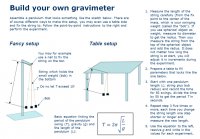Study questions and exercises
Write the answers to the questions in a word document and send it to christian.stranne[at]geo.su.se. Your document should be named with your name and the moment according to the following convention: firstname_lastname_MomentX.docx
Once we received your answers you will get a correction sheet. Correct your own answers using the sheet and where you have questions, please write them in an email to the course email. When you have answered all questions you will also get a code to open the lecture(s) of the next Moment.
The study questions and exercises are only for your own learning and the code system is intended to help you following the course structure and to set your study pace. It is your own responsibility to follow this scheme.
Study questions and exercises on Moment 6
- What is the difference between the gravitational acceleration (g) and the gravitational potential (U)?
- What is the geoid representing?
- What is a geoid undulation model?
- What are the raw heights you get from a GPS referring to?
- How much above or below the WGS 84 ellipsoid may the geoid be located?
- The value of g various at different locations on Earth. Mention five different reasons for this variation.
- What is the difference between an absolute gravity measurement and a relative?
- What is a gravity map of Bouguer anomalies showing?
- What kind of gravity anomaly do you expect to see across a deep ocean trench of a subduction zone in a free air gravity anomaly map? Why?
- Gravimeters can be divided into three main groups. What are these three groups?
- Follow the sketch and instructions below and build your own gravimeter and measure gravity at your place. What value did you get?


- What is the theoretical value for the gravity at the location for your measurement with the pendulum if you consider the latitude correction only?
- What is the unit for gravity in the SI unit system and what does it stand for?
- Why do we need to correct gravity measurements for isostasy?
- What is upward continuation and how does it affect the achievable resolution of the predicted bathymetry method?